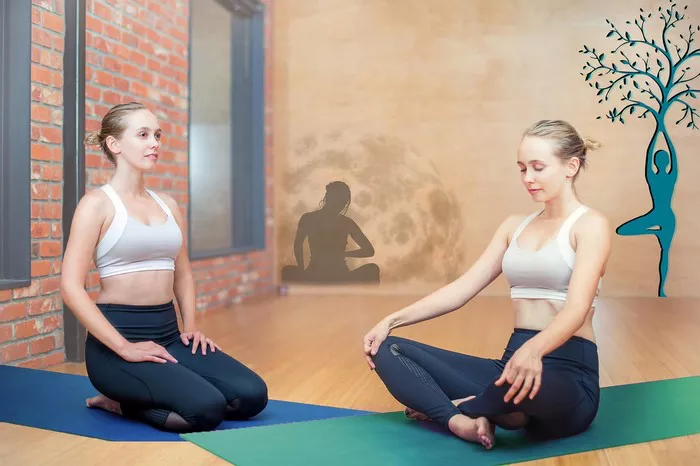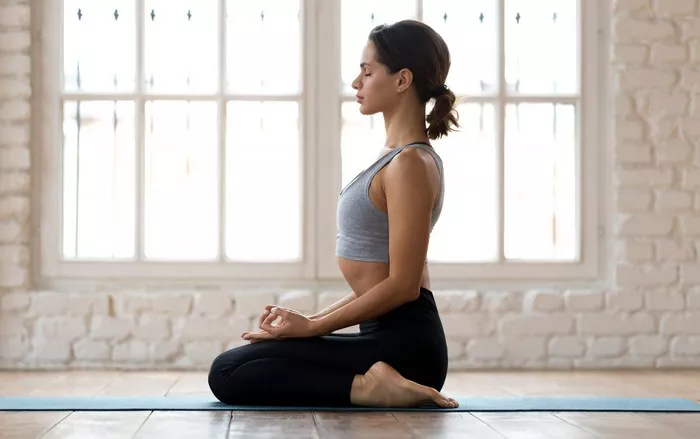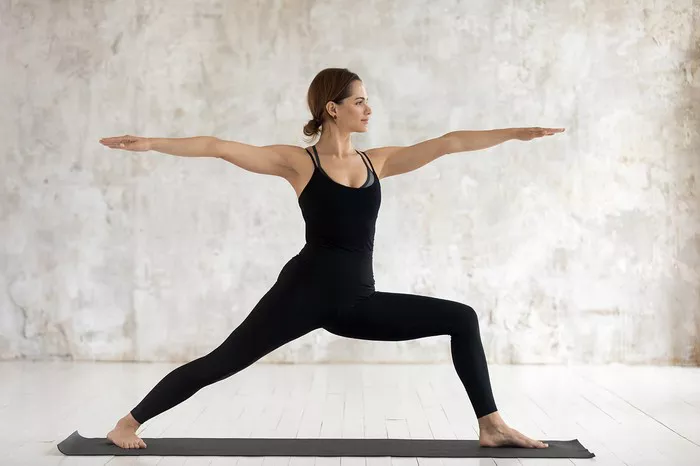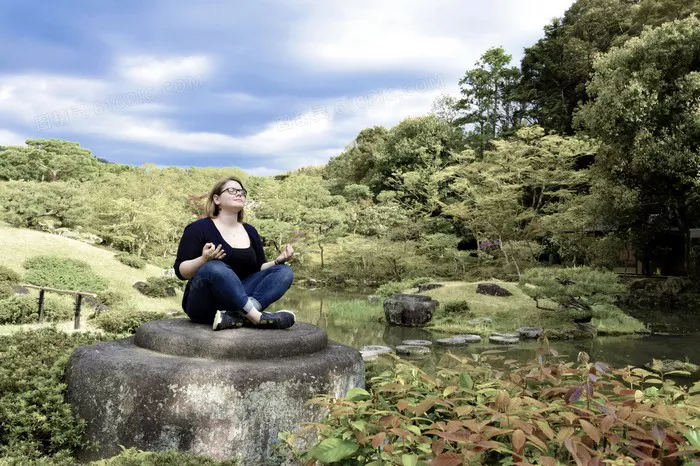The Ashtanga Yoga Primary Series, also known as Yoga Chikitsa (Yoga Therapy), is a structured sequence of postures designed to purify the body, build strength, and enhance flexibility. The series consists of a set order of asanas performed with synchronized breathing (ujjayi), energy locks (bandhas), and gaze points (drishti). This dynamic practice generates internal heat, detoxifying muscles and organs while calming the mind.
The Primary Series follows a set progression:
- Sun Salutations (Surya Namaskara A & B)
- Standing Poses
- Seated Poses
- Backbends
- Finishing Poses
While the full series consists of over 50 poses, this article highlights eight key postures that form the foundation of the practice.
1. Utthita Trikonasana (Extended Triangle Pose)
Description:
Utthita Trikonasana is a fundamental standing posture that strengthens the legs, stretches the spine, and improves overall balance.
How to Perform:
- Stand with feet wide apart, extend arms parallel to the floor.
- Turn the right foot out 90 degrees and left foot slightly inward.
- Extend the torso over the right leg, placing the right hand on the shin or floor.
- Stretch the left arm toward the ceiling and gaze at the left fingertips.
- Hold for five breaths, then switch sides.
Benefits:
- Enhances flexibility in the hamstrings and spine.
- Strengthens the legs and core muscles.
- Improves focus and stability.
2. Utthita Parsvakonasana (Extended Side Angle Pose)
Description:
A deep side stretch that enhances strength and flexibility, preparing the body for more advanced poses.
How to Perform:
- Begin in a wide stance with arms extended.
- Turn the right foot outward and bend the right knee to 90 degrees.
- Place the right hand on the floor outside the right foot, extending the left arm overhead.
- Engage the core and keep the chest open.
- Hold for five breaths and switch sides.
Benefits:
- Strengthens legs and opens hips.
- Stretches the spine and obliques.
- Enhances endurance and stability.
3. Paschimottanasana (Seated Forward Bend)
Description:
A seated forward fold that deeply stretches the back body while calming the nervous system.
How to Perform:
- Sit with legs extended and spine tall.
- Inhale, lengthen the torso, and exhale as you hinge from the hips to fold forward.
- Hold the feet, shins, or use a strap for support.
- Maintain a long spine and engage the lower belly.
- Hold for five breaths.
Benefits:
- Stretches the hamstrings, spine, and shoulders.
- Improves digestion and reduces stress.
- Stimulates internal organs and the nervous system.
4. Janu Sirsasana (Head-to-Knee Pose)
Description:
A grounding seated posture that improves flexibility and stimulates the digestive system.
How to Perform:
- Sit with legs extended, then bend the right knee and place the sole of the foot against the left inner thigh.
- Inhale to lengthen the spine, exhale to fold forward over the extended leg.
- Hold for five breaths, then switch sides.
Benefits:
- Stretches the hamstrings, hips, and spine.
- Stimulates kidney and liver function.
- Calms the mind and relieves anxiety.
5. Marichyasana C (Seated Twist)
Description:
A deep spinal twist that detoxifies the internal organs and increases spinal flexibility.
How to Perform:
- Sit with legs extended, then bend the right knee with the foot flat on the floor.
- Place the right hand behind you for support.
- Cross the left elbow over the right knee and twist to the right.
- Engage the core and keep the spine lifted.
- Hold for five breaths and switch sides.
Benefits:
- Improves digestion and detoxifies internal organs.
- Increases spinal mobility.
- Strengthens the obliques and core.
6. Bhujapidasana (Shoulder-Pressing Pose)
Description:
An arm balance that strengthens the upper body and enhances focus.
How to Perform:
- Begin in a squat with feet slightly apart.
- Place hands on the floor between the feet and bring the thighs onto the upper arms.
- Engage the core and lift the feet off the ground, crossing the ankles.
- Hold for five breaths before releasing.
Benefits:
- Builds upper body and core strength.
- Improves coordination and balance.
- Increases mental focus and concentration.
7. Setu Bandhasana (Bridge Pose)
Description:
A foundational backbend that strengthens the spine and promotes heart opening.
How to Perform:
- Lie on your back with knees bent and feet hip-width apart.
- Press through the feet to lift the hips toward the ceiling.
- Clasp the hands beneath the back for support.
- Hold for five breaths before lowering down.
Benefits:
- Strengthens the back, glutes, and hamstrings.
- Opens the chest and shoulders.
- Reduces stress and fatigue.
8. Savasana (Corpse Pose)
Description:
The final relaxation pose that allows the body to integrate the benefits of practice.
How to Perform:
- Lie flat on the back with arms relaxed by the sides.
- Close the eyes and let the body relax completely.
- Focus on slow, deep breathing and remain still for 5–10 minutes.
Benefits:
- Deeply relaxes the nervous system.
- Lowers blood pressure and stress levels.
- Enhances overall mental clarity and focus.
Conclusion
The Ashtanga Primary Series is a transformative practice that builds strength, flexibility, and inner awareness. These eight key poses form the core of the sequence, each offering unique benefits for body and mind. By practicing with consistency and mindfulness, students can experience profound physical and mental growth through Ashtanga Yoga.
Related Topics:























